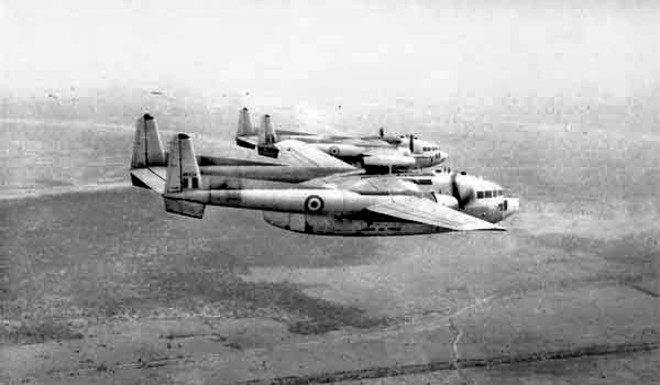Despite the PAF striking many Indian air bases on the night of December 3, the IAF retaliated brilliantly and came out victorious

Striking ability: The war revealed the true air-to-air combat capabilities of the Gnat

Ajay Banerjee
For the Indian Air Force, the 1971 War with Pakistan started when it bore the first brunt of enemy attack that was timed to coincide with a UN meeting in New York. Just a few hours before the UN Security Council (UNSC) was to hold a meeting to discuss the ‘situation in the India/Pakistan subcontinent’, Pakistani President General Yahya Khan declared war against India on December 3. Just before sunset on the same day, Pakistani fighter bombers struck five Indian airfields — Srinagar, Avantipur, Pathankot, Amritsar and the advanced landing ground at Faridkot. More strikes by the PAF followed at night at IAF bases at Ambala, Agra, Halwara, Amritsar, Pathankot, Srinagar, Sirsa, Adampur, Nal, Jodhpur and Jamnagar. But not a single IAF aircraft was destroyed in these raids and runways damaged were repaired within hours. Apart from bases, the PAF attacked railway stations, Indian armour concentrations and other targets. Famously, the Soviet Union used its veto to stall the UNSC from blaming India and the resolution was finally adopted some two weeks later asking both India and Pakistan to cease hostilities. In retaliation , over the ensuing two weeks, the IAF literally turned the tables on the enemy and dominated both flanks – the west and east. In a counterattack it carried out some 4,000 sorties in the west and another 1,978 sorties in the east.In hindsight, PAF’s plan was to neutralise the IAF jets on the ground with a lightning air strike and then it hoped to ride on the shoulders of its ally, the US, to get India censured for aggression. The PAF attack, coordinated with the expected UNSC action, had come about after an incident on November 22. That day, Flight Lieutenant M A Ganapathy and Flying Officer D Lazarus, had shot down an intruding PAF plane over Boyra near Calcutta and its pilots had been taken captive. The war in 1971 revealed the true air-to-air combat capabilities of the MiG-21, a Soviet-built top-line fighter jet of those times. The IAF had six squadrons of these stationed in ‘penny-packets’ all across and had ample opportunity to engage the enemy.Western flank: The IAF’s counter strike in the west was mounted on much greater scale than in the east. The high-point remains the well- documented story of Ambala boy Flying Officer Nirmaljit Singh Sekhon, who single-handedly took on six PAF sabre jets, hitting two of them over Srinagar before losing life when his plane nose-dived into a valley near Budgam after having endured serious enemy hits. He was awarded the Paramvir Chakra (PVC) posthumously. Earlier the three ‘counter-strikes’ launched on December 4 were stunning. The 20 Squadron then located at Pathankot, bombed PAF airfields at Peshawar, Chaklala and Kohat. The raids left eight aircraft destroyed on the ground. The first sortie to Chaklala was flown by a young Naval pilot, later Admiral Arun Prakash (retd) who commanded the Indian Navy. Chakala was hit again the next day. Those were days when both countries did not have many radars or potent anti-aircraft missiles and such day-time raids were possible. Today it would be much tougher, if not impossible.In the Arabian Sea, Pakistan’s off-shore oil installations near Karachi harbour were struck twice on December 4 by an IAF formation which repeated the act two days later. Another epic was the way the Pakistani Armoured formation was stopped at a Longewala. A company of the valiant 23 Punjab led by Brig KS Chandpuri (retd) had held on during the night, before IAF planes bombed the Pakistani tanks at first light on December 7. The other big hit was when the AN-12s flying from Jodhpur struck the Sui Gas Plant in Sindh. Eastern flank: By December 7, the IAF had broken the back of the PAF in East Pakistan. It had even self-destroyed 13 planes at Dacca lest these could be used by India. On December 8, PAF fighter pilots were sent to West Pakistan via Burma. The MiG-21s based at Guwahati, blasted the runway at Tejgaon base and once the PAF repaired it, the runaway was hit again on December 7.The IAF’s 14 Squadron (flying bulls) operated jets from within enemy territory at Jessore after it was captured. The IAF Mi-4 helicopters participated in the tactically brilliantly move to air-lift some 1,500-1,600 troops of the 311 Brigade across the Meghna River starting with the first batch of 600 men on the night of December 9 when the 4 corps of the Army led by Lt-Gen Sagat Singh was advancing to capture Dacca (now Dhaka) from its eastern flank. In 36 hours over 110 sorties were flown to cross the Meghna, a four-km wide distributory of the mighty Brahmaputra river. At the end of the war Pakistan leader, Zulfiqar Ali Bhutto, who took over from General Yahya Khan after the 1971 defeat publically castigated the PAF for its lack of fight. The IAF had come out victorious.
